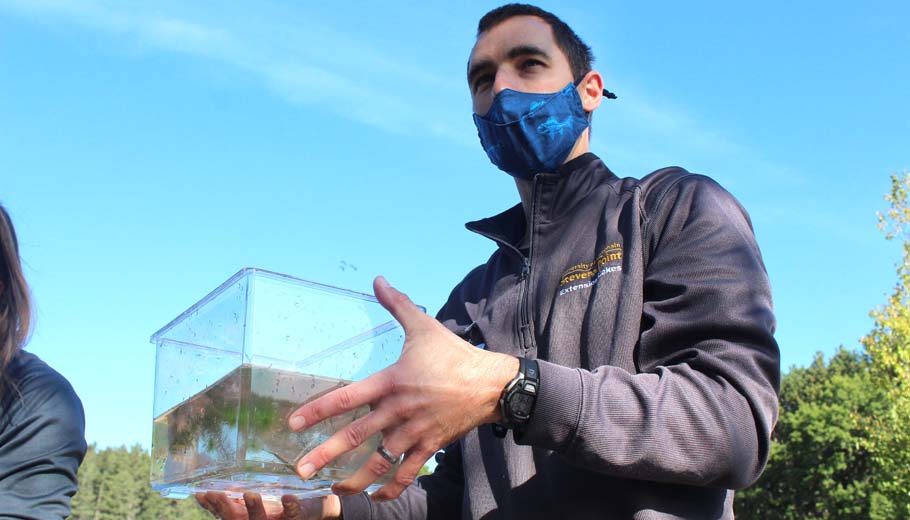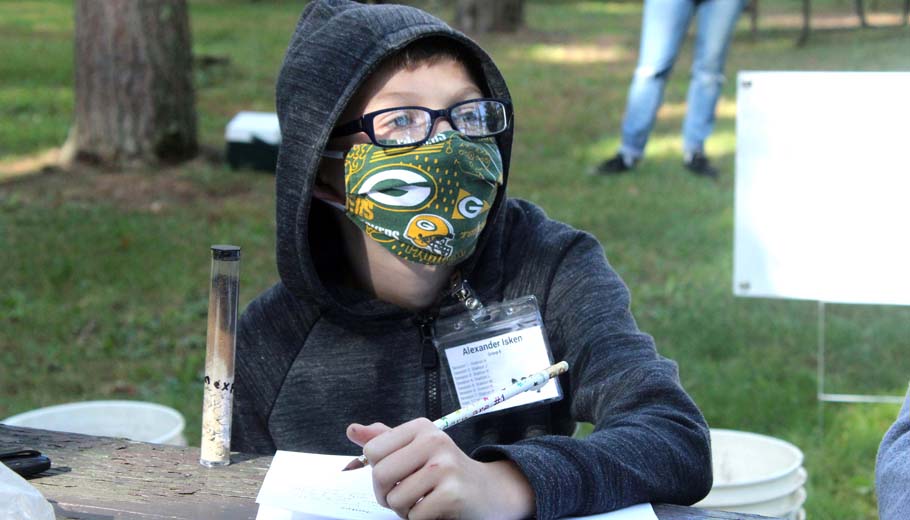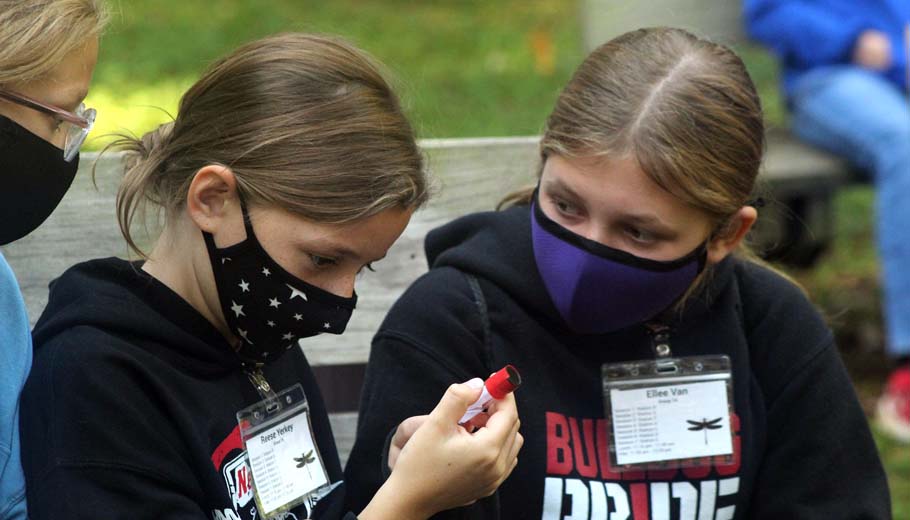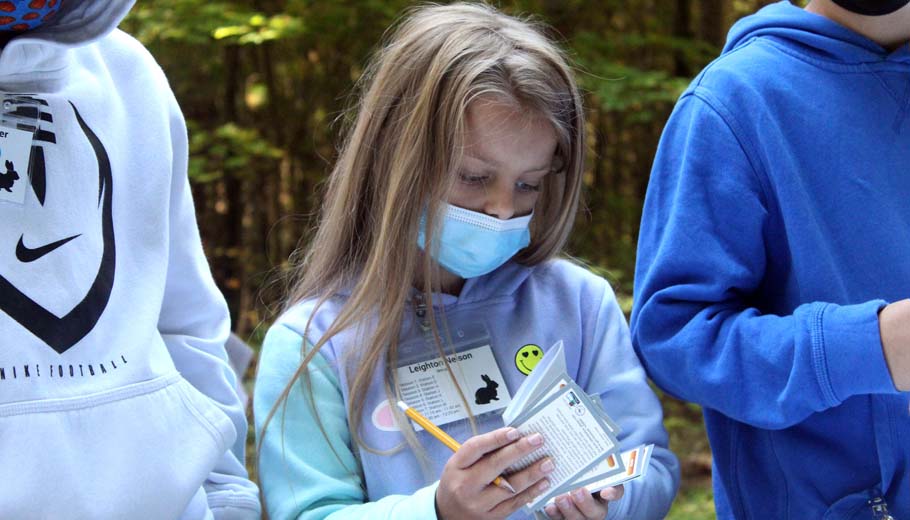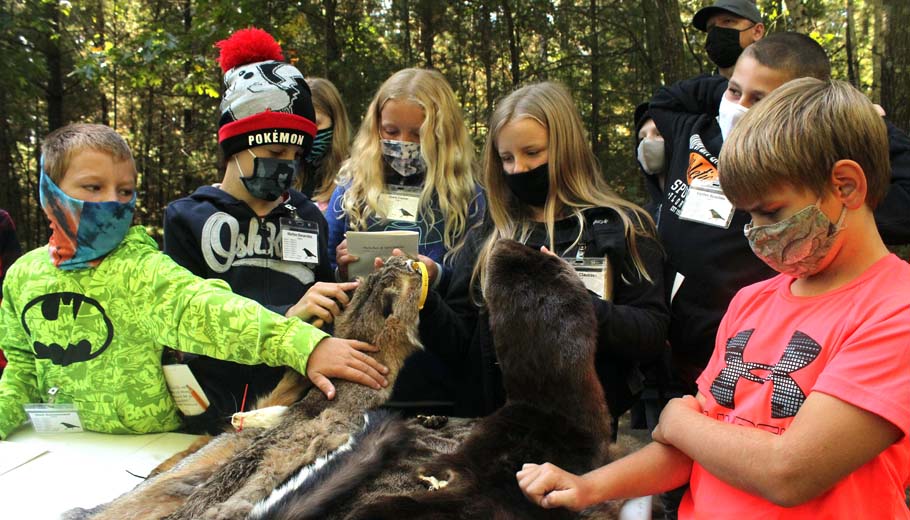Fifth-graders head to Hartman Creek
By Greg Seubert
Hartman Creek State Park isn’t known for drawing big crowds in late September.
That wasn’t the case Sept. 24, as more than 100 area fifth-graders headed to the park for the Golden Sands Resource Conservation and Development Council’s Waupaca County Conservation Field Day.
Instead of spending the day in classrooms, the students learned about everything from aquatic invasive species to what kind of plants and animals call the park’s lakes home to soils to boating safety to trapping to fisheries management.
“The kids get to have a fun, awesome, interactive day out in the field,” said Hannah Butkiewicz, the council’s executive director. “They get a chance to be in an outdoor classroom. By getting to touch things, work with their hands and be outside, they remember these fun experiences and they have a lasting impression beyond the day itself.”
Butkiewicz, a Waupaca High School graduate who later went on to earn a degree in forest and wildlife ecology from the University of Wisconsin and is now working on her master’s degree in wildlife at UW-Stevens Point, attended a Conservation Day as a fifth-grader, but admitted she doesn’t remember the event.
“I don’t remember going as a fifth-grader to Hartman Creek, but I do remember that I hosted one of the stations as a high school student,” she said. “I was working with kids with nets and they were catching invertebrates in shallow water and looked at them underneath magnifying glasses. The kids were giggling, happy and completely engaged.”
Paul Skawinski and Erin McFarlane of the UW-Stevens Point College of Natural Resources’ Extension Lakes program showed students some of the plants and animals they scooped out of Hartman Lake with a net.
Meanwhile, Wisconsin Trappers Association member Gary Alexander brought pelts of a coyote, red fox, bobcat and other mammals and also demonstrated different traps used to catch animals.
Jason Breeggemann, a state Department of Natural Resources fisheries biologist for Waupaca, Shawano and Menominee counties, brought a boat the DNR uses to study fish populations and trends on area lakes.
Sharing information
Butkiewicz said students often pass on information they learn at the field day to their family.
“A lot of times, we think about information coming from teachers or parents to students, but this is an opportunity for students to be educators,” she said. “Maybe some of their parents aren’t aware of aquatic invasive species. The parents get to learn information that their kids might have to share. They might be more inclined to make sure that all the vegetation is removed from their boats and that they wash their boat and let their boat dry before they bring it into another water body. If they didn’t take those certain precautions, it could result in the spreading of invasive species.”
The council has sponsored the field day at the park for 15 years, but had to change its plans last year because of issues related to the coronavirus pandemic.
“We were still able to hold the conservation field day, but it was virtual,” Butkiewicz said. “There was still a lot of participation and interest from the students. I recall the chat box was filling up with questions the students had because they wanted to know more.”
Butkiewicz expects the Stevens Point-based council, which promotes clean water, healthy forests, abundant wildlife and sustainable agriculture, to keep holding the event.
“We’re always learning new information, so the material is constantly adapting,” she said. “We’re able to provide new and fresh material to students every year. There’s always a need for education like this.”

